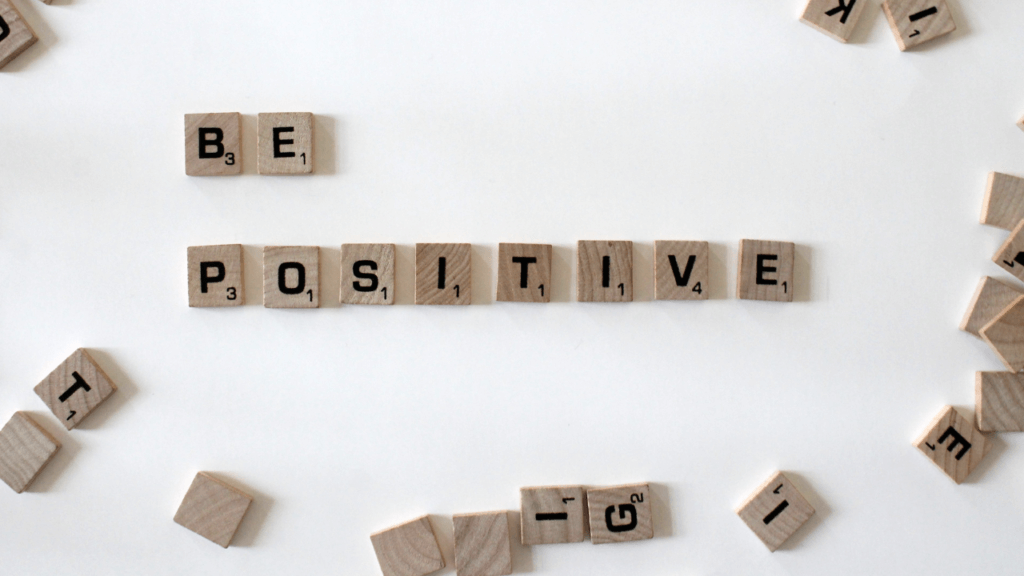Can mindfulness lead to a positive outlook on life? Does it encourage an optimistic point of view? We think so.
When we think about some of the common definitions associated with mindfulness it can appear to be somewhat bland. The Merriam-Webster Dictionary defines mindfulness as: The practice of maintaining a nonjudgmental state of heightened or complete awareness of one’s thoughts, emotions, or experiences on a moment-to-moment basis. This could be read with a tone of indifference towards the present-moment experience – a kind of monotone attitude toward what’s happening.
For the practice of the month we are going to discuss how practicing mindfulness can help us create a positive outlook and learn to take in the good.
“The brain is like Velcro for negative experiences, but Teflon for positive ones.”
– Dr. Rick Hanson
We’re wired with negativity bias.
Research shows that our brains are wired with a “negativity bias” – a survival mechanism and natural tendency to scan for, register, store, recall, and react to unpleasant experiences. This natural instinct can create a sense of pessimism in all of us – creating a negative outlook on life.
Rick Hanson notes that negativity bias may show up in a variety of ways. Do these experiences sound familiar?
- Painful experiences may often be more memorable than pleasurable ones.
- In our relationships, it can take up to five positive interactions to make up for one negative interaction.
- We will work much harder to avoid losing $500 than we will to make that same amount of money.
- At the end of a day, what usually occupies your mind? The ten things that went right or the one that went wrong?
How can mindfulness help us overcome negativity bias?
We have inherited this as part of our evolutionary legacy, but this doesn’t mean we have to be driven by it. If we begin to guide the mind toward the good, develop awareness, and inspire positivity, this can become a practical mindfulness skill that will provide much more happiness to ourselves, to others, and to the world. We can train our minds to see the glass as half-full.
Daniel Goleman and Richard E. Boyatzis identified twelve elements that make up emotional intelligence. One of these is a positive outlook – the ability to see the positive in people, situations, and events. It means we are persistent in pursuing goals despite setbacks and obstacles; we can see the opportunity in situations where others may see the set-back as devastating. This optimist view can lead us to believe that changes, both now, and in the future will be for the better.
Researchers who study optimism have discovered that individuals who are inclined toward a negative and pessimistic outlook tend to give up in the face of adversity, resulting in a feeling of helplessness. They end up blaming themselves for the bad things that happen and assume their situation will never change and that the world is unfair. On the other hand, those who are inclined towards optimism and positive outlook can meet adversity with resilience and are better able to follow through, not give up, and can avoid the experience of hopelessness despite ongoing setbacks and obstacles.
When positive outlook is accompanied by mindfulness, we are able to recognize that difficult things happen in life, but we don’t have to interpret them as predictors to what will happen next. This can be a very encouraging realization. With mindfulness we can bring our awareness to the conditions of the present-moment when things become difficult. We can acknowledge the presence of any form of adversity. We recognize and embrace it. When present-moment awareness is met with a positive outlook, we can even see that the situation may change for the better. We can build confidence in our ability to deal with stressful life events. This can reduce anxiety, stress and depression. With mindfulness practice and a positive outlook, we are better equipped to manage the experience with more skill.
Here are 3 tips to bring into your life and mindfulness practice.
1) The next time you experience a setback at work or home, see if you can take a pause and a few mindful breaths and train yourself to find a possible upside in that situation or event.
2) As you move through your day, see if you can recognize small acts of kindness and return them.
3) Bring mindfulness to pleasant experiences, when you notice something good, let yourself feel good about it.

